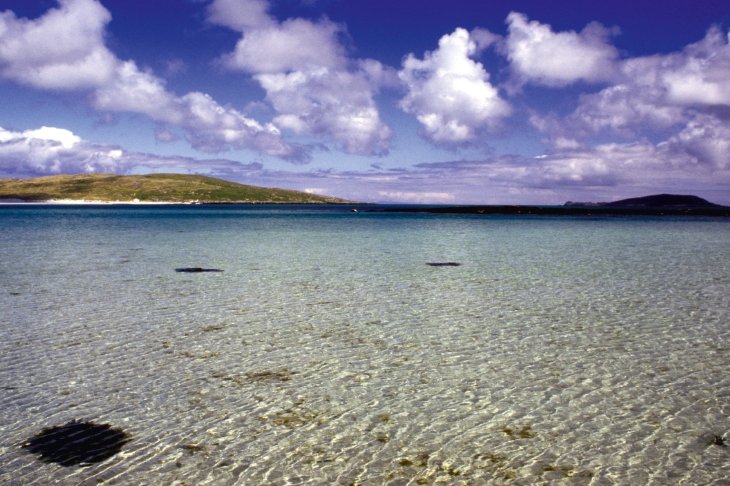Britain has 6,000 islands. Not as many as Sweden’s 30,000 but quite enough to be going on with. Only 132 of ours are populated, on a scale that slides from the 85,000 people on the Isle of Man to tiny St Kilda, with its summertime population of just 15.
Patrick Barkham is a skilled compiler of lists. His charming and successful first book, The Butterfly Isles, chronicled the sighting of every one of Britain’s 59 butterflies within a single summer. It is high up on my own list of ‘I wish I’d thought of that’ ideas.
Clearly trying to gazetteer all Britain’s islands in a similar way might be indigestible, so he has restricted himself to a representative First Eleven, a team of big hitters scattered evenly around the mainland from Orkney in the north to Alderney in the south.
Islands make their presence felt. They have character. Some, like Skye, are even celebrities. As Barkham remarks, ‘a few square miles of small island looms far larger than the equivalent pocket of land on the mainland’.
They also have their own ecosystems — often simplified and reduced, with fewer species. Barkham is one of our most accessible nature writers and has a deft touch for painting in both landscape and animals. Here he is on the smells that assault him when he arrives on the Isle of Man: ‘The air is moist and perfumed — by heather on the purple uplands, by freshly cut lawn in the suburbs, and then by pungent dashes of seaweed, flung by the waves onto shoreside roads.’ The seals of Eigg are as fat as slugs.
Barkham is blessed with a talent far rarer in nature writers than a corncrake in Surrey — he has a wonderful sense of humour and can be very funny. Nor does he take himself that seriously. This is a writer who once dressed up in a badger onesie to promote a book at a literary festival.
He also has an eye for the quirky and counterintuitive in the human world. On the Isle of Man, he explores how online gambling came to the rescue when their tax haven status was called into question — and how new cryptocurrencies like Bitcoin may now give them a third wind.
Running like a thread throughout the book are the island adventures of Compton Mackenzie. Whisky Galore, set on fictional ‘Little Todday’, may be well-known, but Mackenzie’s wider obsession with islands is less so. Although born in mainland Hartlepool, this wildly eccentric writer bought and sold a series of small islands throughout his lifetime, both in the Channel Islands and the Hebrides. Most proved financial disasters. Islands, Barkham reminds us mournfully, are almost always expensive. On Eigg, for instance, the community still pays twice as much for its electricity as the mainland, despite generating it themselves from solar power.
With considerable brio, Compton Mackenzie rode out these insular losses and ended up on Barra, with a mistress 30 years younger than him, while his wife stayed on the mainland. Mistress and wife maintained an amiable correspondence about how to manage Compton’s more complicated habits, like staying up all night to write while listening to Sibelius at full volume.
His perseverance paid off when in 1942 the SS Politician ran aground on rocks visible from his Barra home. A friend presented him with some of the 264,000 whisky bottles from the hold, and fuelled by a great deal of all-night Sibelius and liquid refreshment, Mackenzie rattled out Whisky Galore, which became a much-needed hit both as a book and as a film. Of his 100 works, some far more ambitious and laboured, it is the only one still in print.
Islander is a charming and attractive book, somewhat in the spirit of an Ealing comedy itself. As Barkham travels from one lump of sea-girt rock to another, he makes the gentle point that mainland Britain is of course also an island, albeit a very large one; his shrewd study of the islander mentality, which can veer wildly between the piratical, conservative and just plain bloody-minded, could stand for the entire country. None of us, after all, would want Customs and Excise to confiscate a wrecked tanker-load of whisky when it could be put to so much better use.






Comments